Read Less, Retain More: The Three-Part System That Saves 15 Hours Per Week
How busy professionals cut reading time in half while tripling retention with science-backed Stack, Capture, Cadence method
Hi Kwik Brain,
In this edition, we are looking at a framework that cuts your reading time in half while tripling what you remember one month later. No complex systems. Just three habits that work with your brain instead of against it.
Last Tuesday, you finished that 300-page business book. Thursday morning, your colleague asked what you learned.
Nothing came to mind.
You remember the blue cover. The author's photo. Maybe it was about leadership or digital transformation. But actionable insights? Gone.
This happens because most reading fights how your brain processes information. You're not forgetting because you're distracted. You're forgetting because traditional reading ignores cognitive load theory, the science of how much your working memory can handle.
The fix isn't reading more books or taking more notes. It's three parts: Stack, Capture, Cadence.
The stack: why three books beat one
The context problem that kills comprehension
You crack open that dense industry report. Your brain tries to process dozens of new concepts simultaneously. Terms you don't recognize. Frameworks you've never seen. References outside your experience.
This creates massive cognitive overload. Your working memory maxes out just decoding unfamiliar words while grasping new ideas. Nothing sticks because you're operating at capacity to understand individual sentences.
The stack fixes this by building context in layers.
How three books work together
Pick one work topic. Select three books:
Broad: Survey or history for vocabulary and big picture
Mid-level: Overview connecting general themes to your focus
Niche: The technical book you actually need to master
Read all three at once, but strategically.
Example for digital marketing:
Broad: "The Long Tail" (context on how digital platforms changed commerce)
Mid-level: "Digital Marketing Strategy" (bridges theory to practice)
Niche: "Advanced Google Analytics" (the technical manual for work)
The broad book gives context so the mid-level makes sense. The mid-level provides frameworks so the niche becomes actionable instead of overwhelming.
Research on schema formation shows this layered approach cuts cognitive load and improves retention. When you hit a complex idea in your niche book, you already have mental scaffolding from the other two.
Capture: turn pages into working memory
Why highlighting fails
Standard highlighting captures text, not understanding. You're copying, not processing. Studies on note-taking show verbatim copying produces minimal learning compared to active summarizing.
Highlighting is passive. Summarizing is active. When you rephrase ideas in your words, you force your brain to process meaning instead of just recognizing phrases.
Here's why this works: Research on the testing effect shows retrieving information from memory strengthens the neural pathways that store it. Each time you actively recall and rephrase an idea, you're rewiring your brain to make that information more accessible.
The two-sentence rule
End each chapter by writing exactly two sentences in your words: "What's the main point here, and why does it matter to my work?"
Your words, not the author's. This forces active processing instead of passive copying.
Quality check: Your summary should pass the "explain it to a colleague" test. If you couldn't brief someone who hasn't read the material using your two sentences, you haven't captured the core idea. Research on active learning shows summaries that connect new information to existing knowledge and practical uses produce much better retention.
Example from a strategy book:
Author's version: "Organizations must develop dynamic capabilities to sense, seize, and reconfigure resources in response to changing market conditions."
Your version: "Companies need systems to spot trends early and reorganize quickly when markets shift. This matters because slow adaptation kills competitive advantage."
The big three capture system
Finish each book with one note using three headers:
Big idea: Core concept in one sentence
Evidence: Most convincing proof or data point
Action: One specific thing you'll do differently
This structure uses what researchers call the testing effect. Actively retrieving and organizing information strengthens memory far more than passive review.
Cadence: timing that builds lasting memory
The spacing advantage
Your brain forgets information predictably. But strategic review at specific intervals makes memories nearly permanent. Large studies on spaced repetition show reviewing at increasing intervals creates retention lasting years.
Optimal spacing isn't fixed numbers. It scales with your retention goal. Need to remember something for one month? Review after 1 day, then 1 week. Need to remember it for one year? Space reviews at 1 week, 1 month, then 3 months. Research across 317 experiments confirms this pattern works across different materials and contexts.
This isn't about reading more. It's reading smarter.
The 25-minute block system
Daily schedule:
Monday: 25 minutes on broad book
Wednesday: 25 minutes on mid-level book
Friday: 25 minutes on niche book
Sunday: 15 minutes reviewing your notes
That's 90 minutes weekly. Compare this to most professionals: 3-4 hours of weekend binge reading that produces zero retention by Friday.
Why 25 minutes? Research on distributed practice shows shorter, focused sessions beat longer ones for retention. Your working memory maintains peak performance for roughly 20-30 minutes before fatigue hurts comprehension. Beyond that, you're not learning faster. You're just spending more time for the same result.
Strategic chapter selection
Don't read sequentially. Read chapters serving your immediate goals first.
Research on retrieval practice shows relevance and application timing affect how well information transfers from working memory to long-term storage. Need insights for next week's presentation? Read those chapters first while the context is fresh.
Priority system:
Chapters you can apply within 7 days (highest retention, immediate relevance)
Chapters answering specific questions you're facing now
Foundation chapters other sections reference heavily
Remaining chapters in whatever order interests you
This uses what scientists call the "generation effect." Information learned responding to an active need gets encoded more deeply than information learned passively. When you read to solve a current problem, your brain automatically creates stronger retrieval pathways.
The 100-minus-your-age quitting rule
Give any book 100 pages minus your age before deciding to continue or quit. You're 35? Give it 65 pages. This prevents sunk cost fallacy while ensuring you give dense material time to click.
Most professionals waste hours finishing books that don't serve them. This rule gives permission to quit strategically while ensuring you don't bail too early on valuable but challenging content.
Success indicator: By page 50 of your trial period, you should understand at least 70% of key terms without looking them up. Still struggling with basic vocabulary? The book's either too advanced or poorly written. Research on cognitive load shows when more than 30% of text consists of unfamiliar elements, learning efficiency drops dramatically.
Measuring your progress
Track these three metrics weekly:
Retention test: One week after finishing a chapter, recreate your two-sentence summary from memory. Can't recall the main point? Your initial summary was too vague or the spacing between reading and review was too long.
Application rate: How many ideas from your reading have you referenced in actual work conversations or decisions? Studies on transfer show information you don't use within 2-3 weeks becomes increasingly difficult to access in practical situations.
Vocabulary growth: Count unknown terms per chapter in your niche book. This should decrease by at least 20% weekly as your broad and mid-level books build foundational knowledge. Not decreasing? Your stack needs rebalancing.
Implementation: your first stack
Week one: choose your topic and three books
Pick one work-relevant topic where you need deeper knowledge. Find your three books using these signals:
Broad book:
Published by major trade publisher
Has extensive endnotes or bibliography
Called "the definitive history" or "comprehensive overview"
Mid-level book:
Written by practitioners, not just academics
Has case studies from your industry
Balances theory with application
Niche book:
Dense technical content
Assumes prior knowledge
The book everyone in your field references but few finish
Week two: start your rotation
Begin with 15-minute sessions to build the habit. Most people overestimate their focus capacity and burn out trying to read for hours.
Set three phone alarms for Monday/Wednesday/Friday blocks. Treat these as unmovable meetings with yourself.
Week three: establish your capture system
After each reading session, immediately write your two-sentence chapter summary. Don't wait. Capture while ideas are fresh.
Create a simple notes file with three sections per book: Big Idea, Evidence, Action. Fill these out as you progress.
Why this saves 15 hours weekly
Traditional approach: Read one book for 4-5 hours, forget 90% within a week, repeat.
Stack system: Read strategically for 90 minutes weekly, retain 80% after one month, build cumulative knowledge that compounds.
Simple math. Most professionals read 25-30 business books yearly and remember almost nothing. That's roughly 150 hours with near-zero retention.
This system cuts reading time to 75 hours yearly while creating lasting knowledge you can actually use.
The efficiency gain isn't just time. It's comprehension. When information connects to existing frameworks, you understand faster and remember longer. Studies on expertise development show this is how professionals in every field build deep knowledge: through connected, structured learning rather than random information consumption.
Your next move
Choose one topic where you need deeper work knowledge. Find three books fitting the broad/mid-level/niche framework. Start with 15-minute blocks three times this week.
The goal isn't reading more books. It's building a system that turns reading time into lasting knowledge that advances your career.
Most professionals treat reading like entertainment, consuming content without retention. You now have a system that treats reading like skill development: strategic, systematic, designed for results that stick.



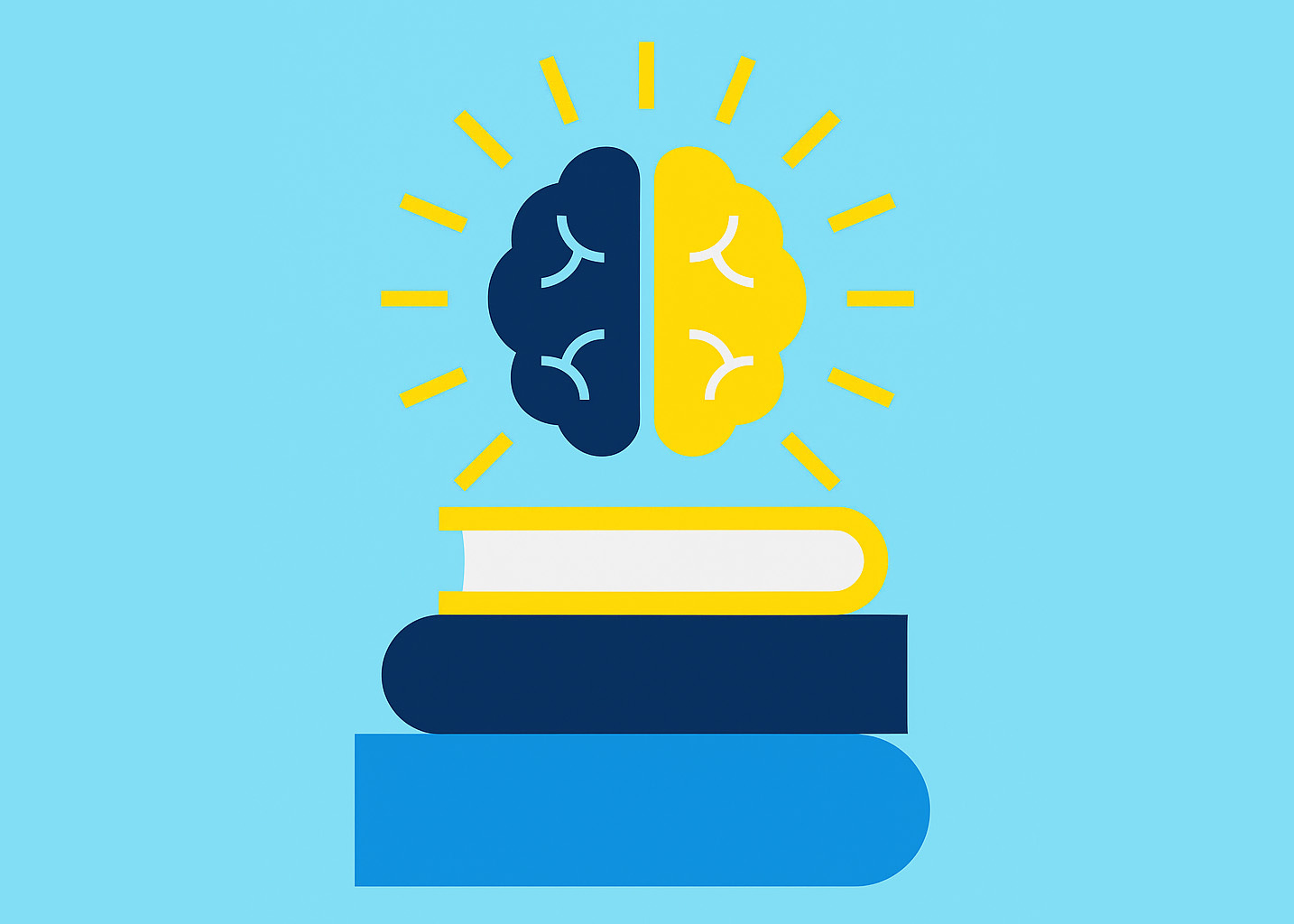
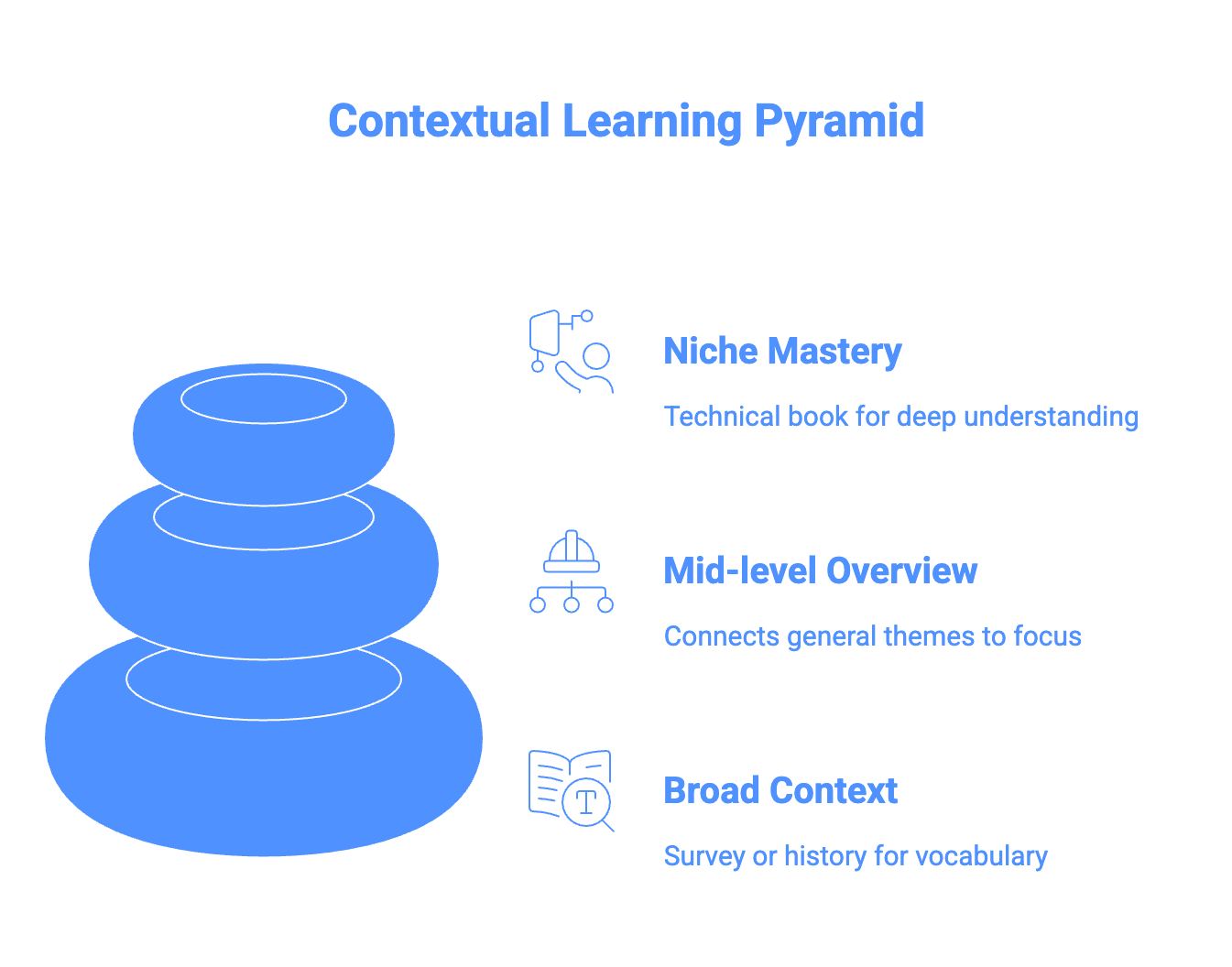
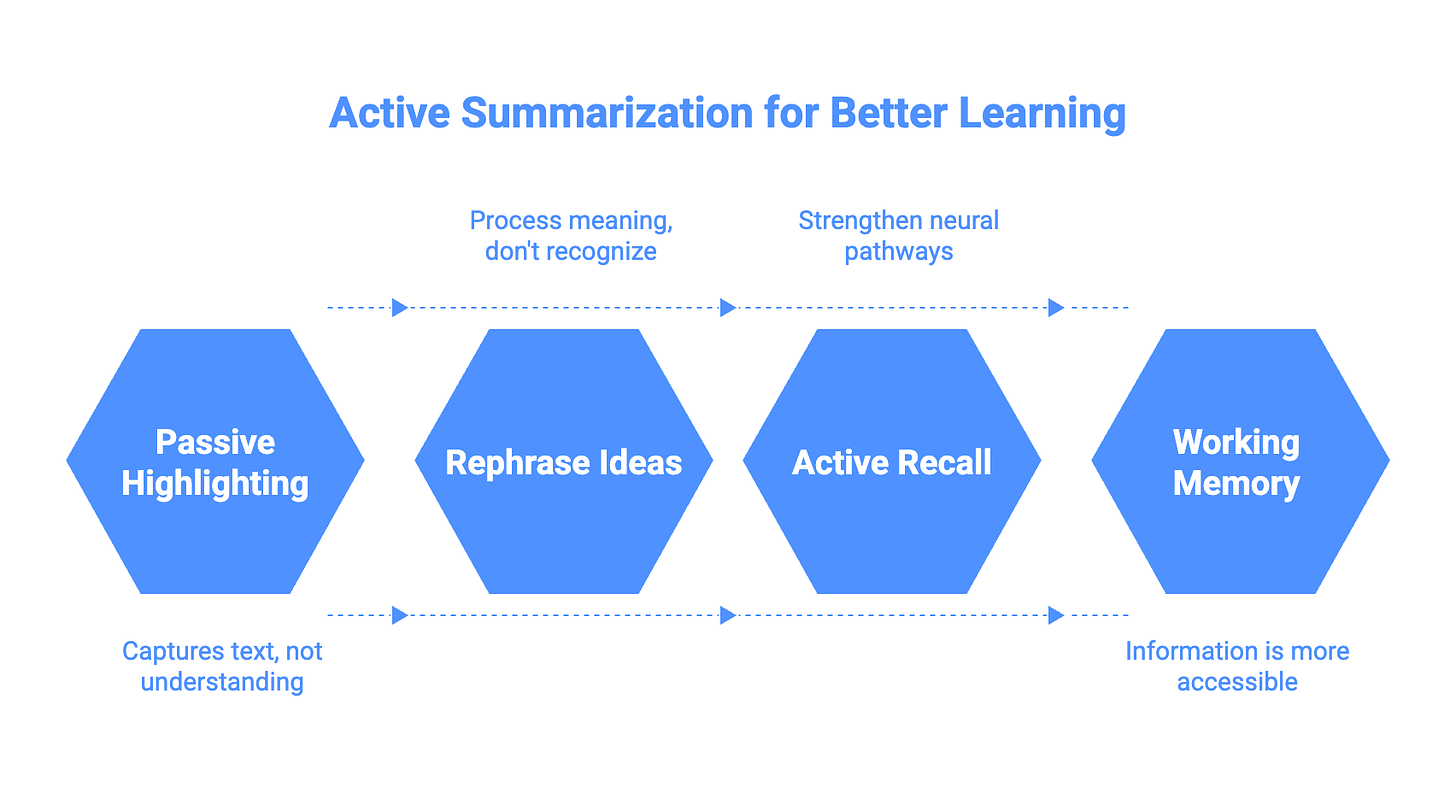
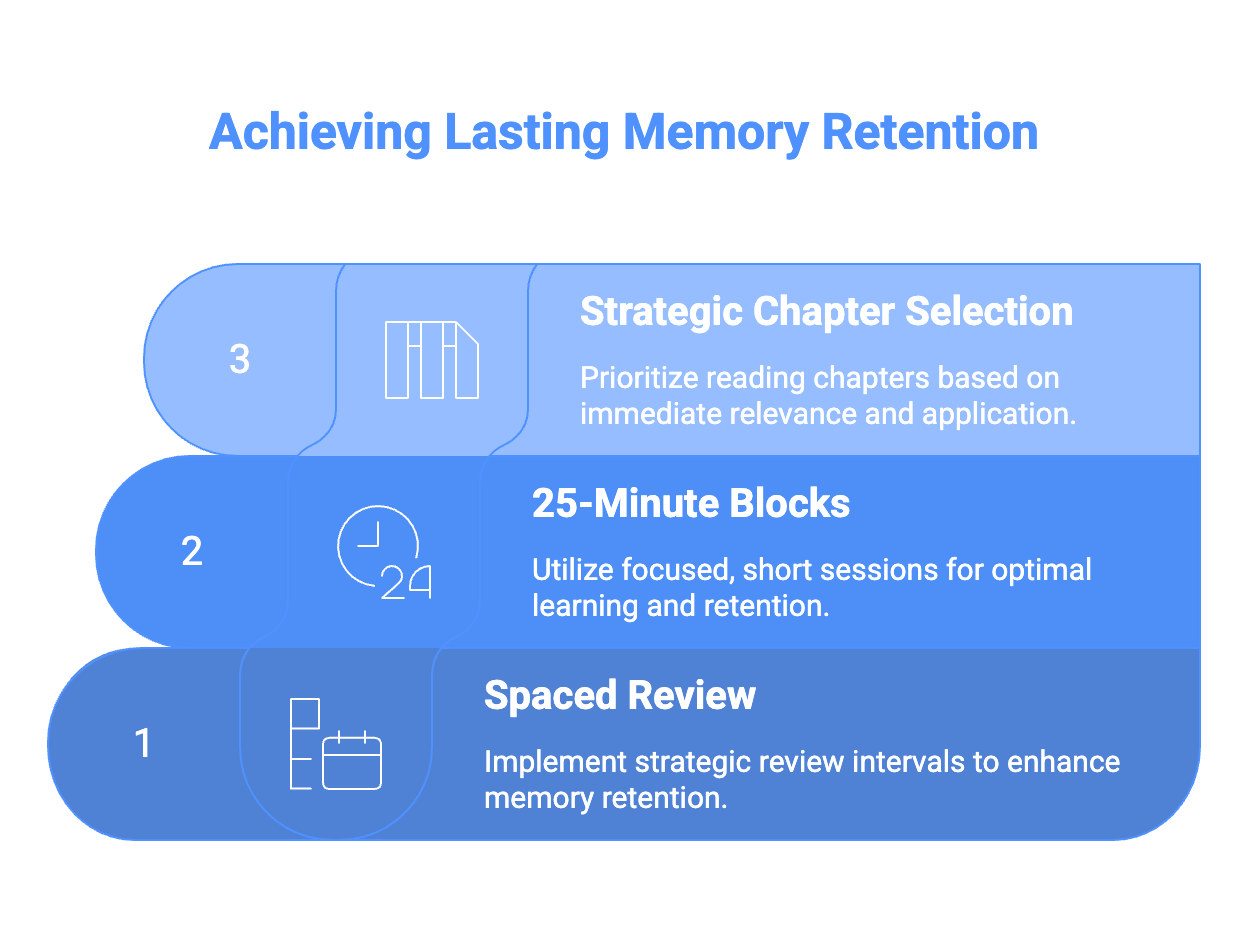
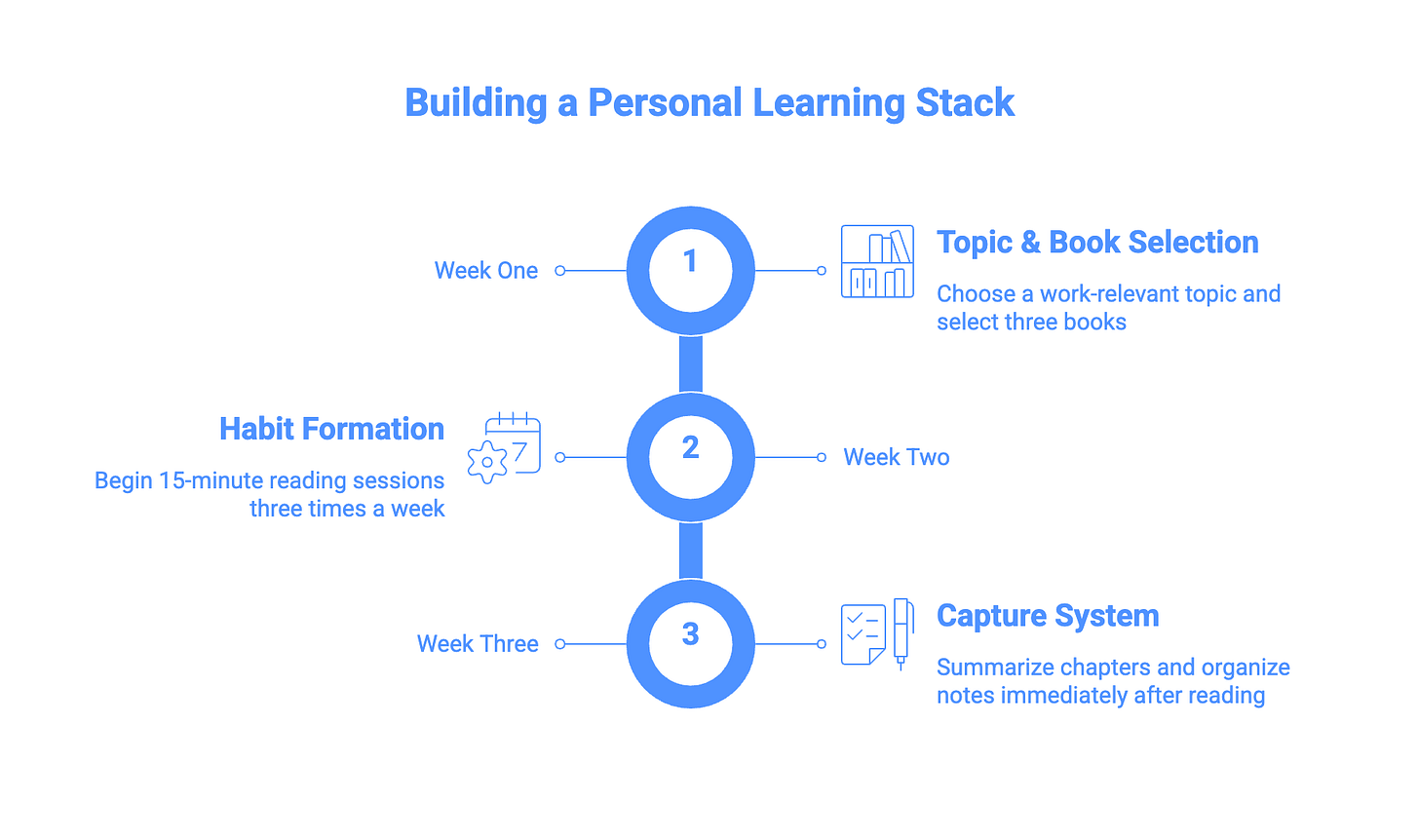
OMG! Such an insight. However I still hesitate to define the difference between the Nisha one and the middle level one.
Love this strategy, Jim.